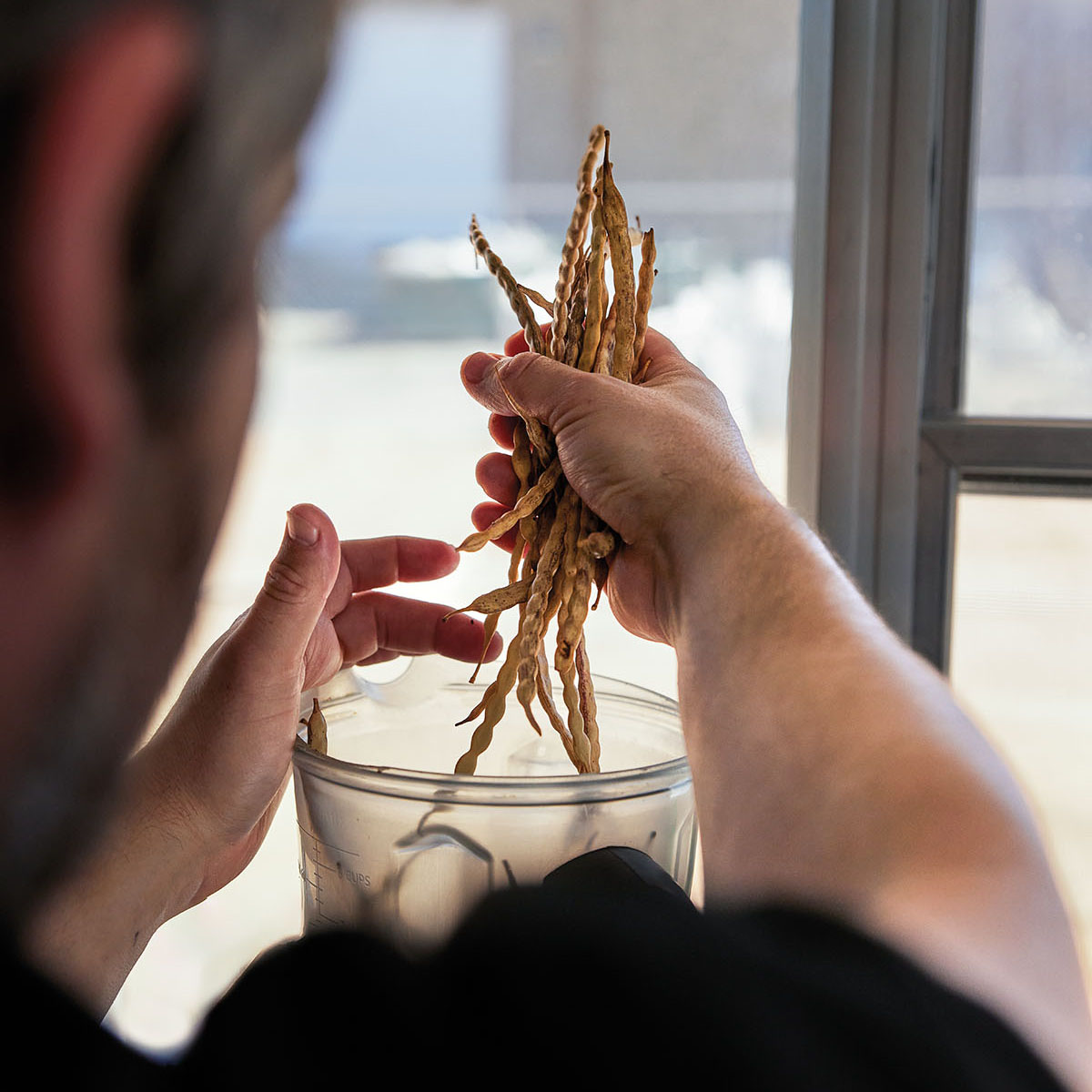
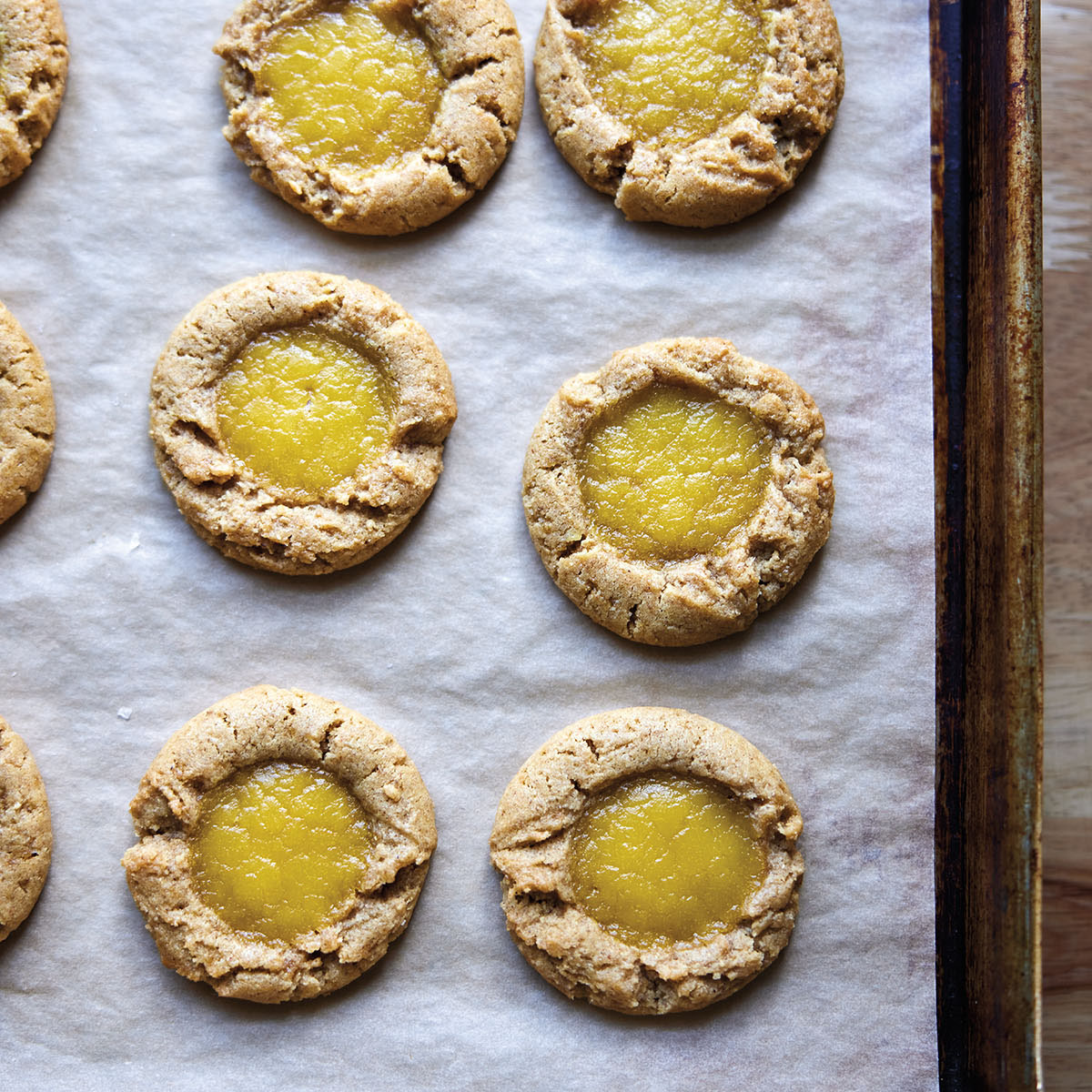
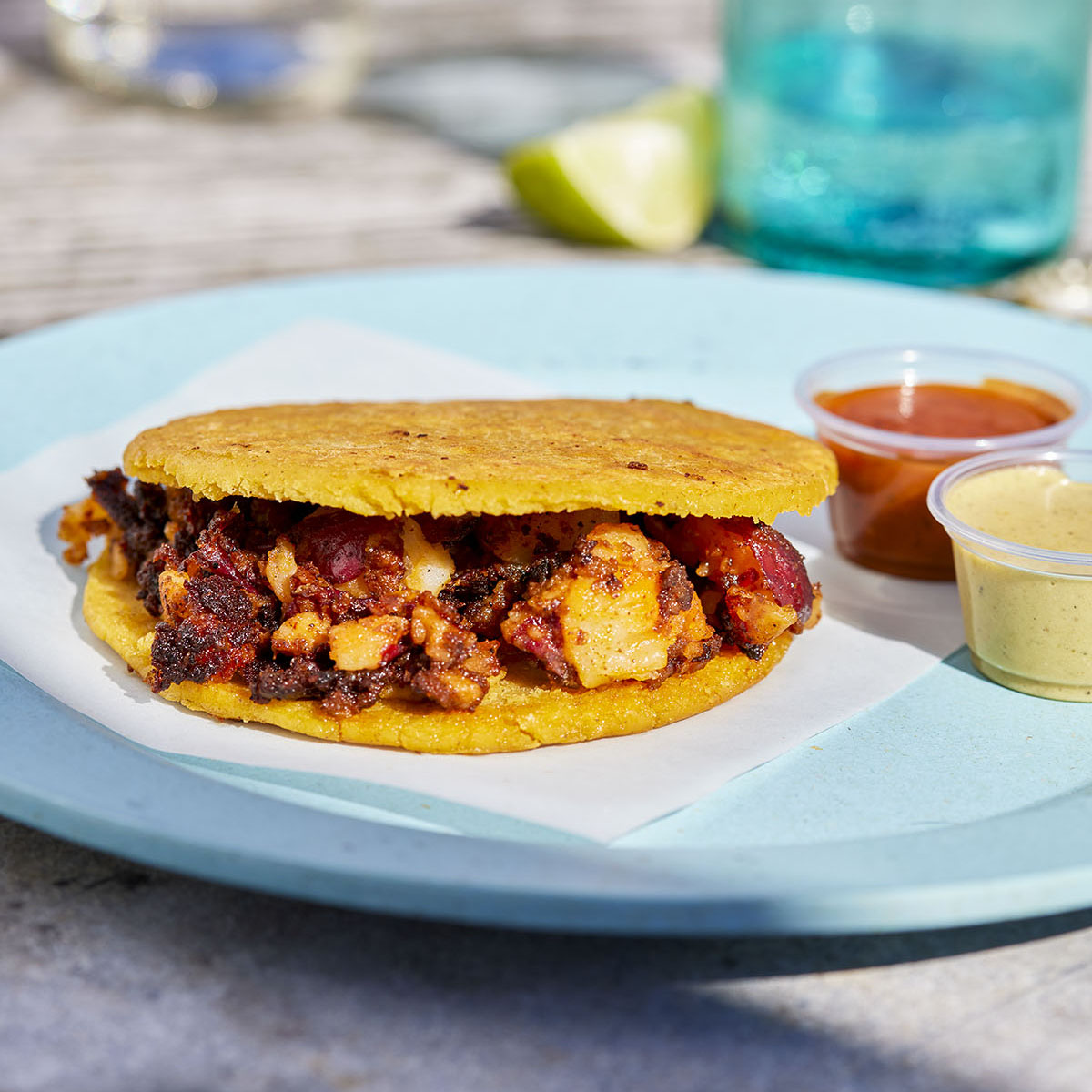
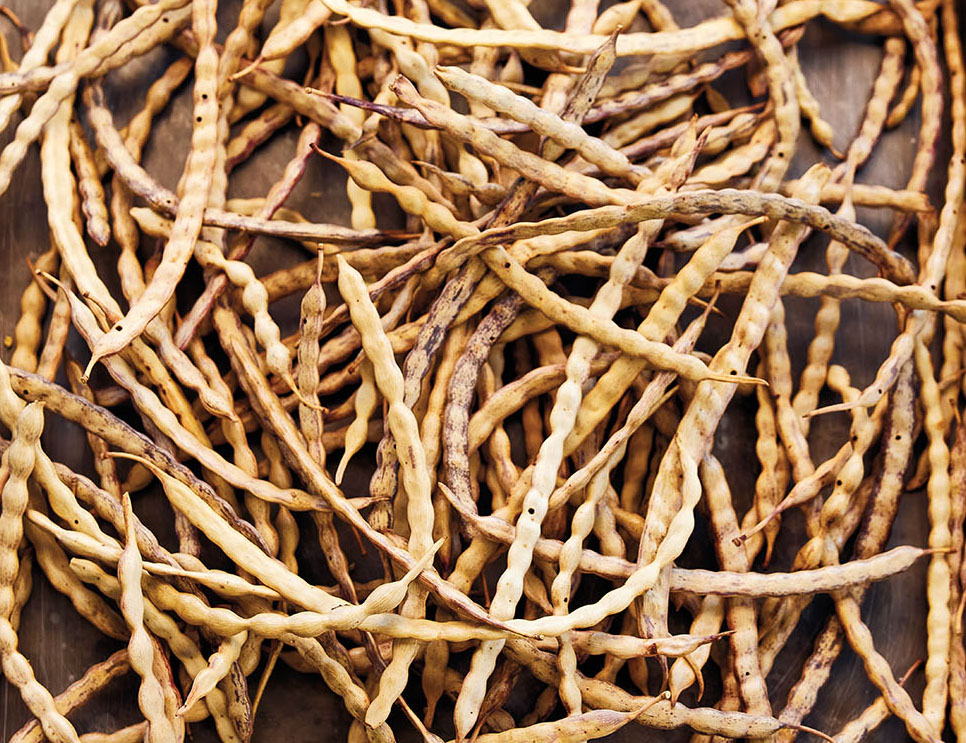

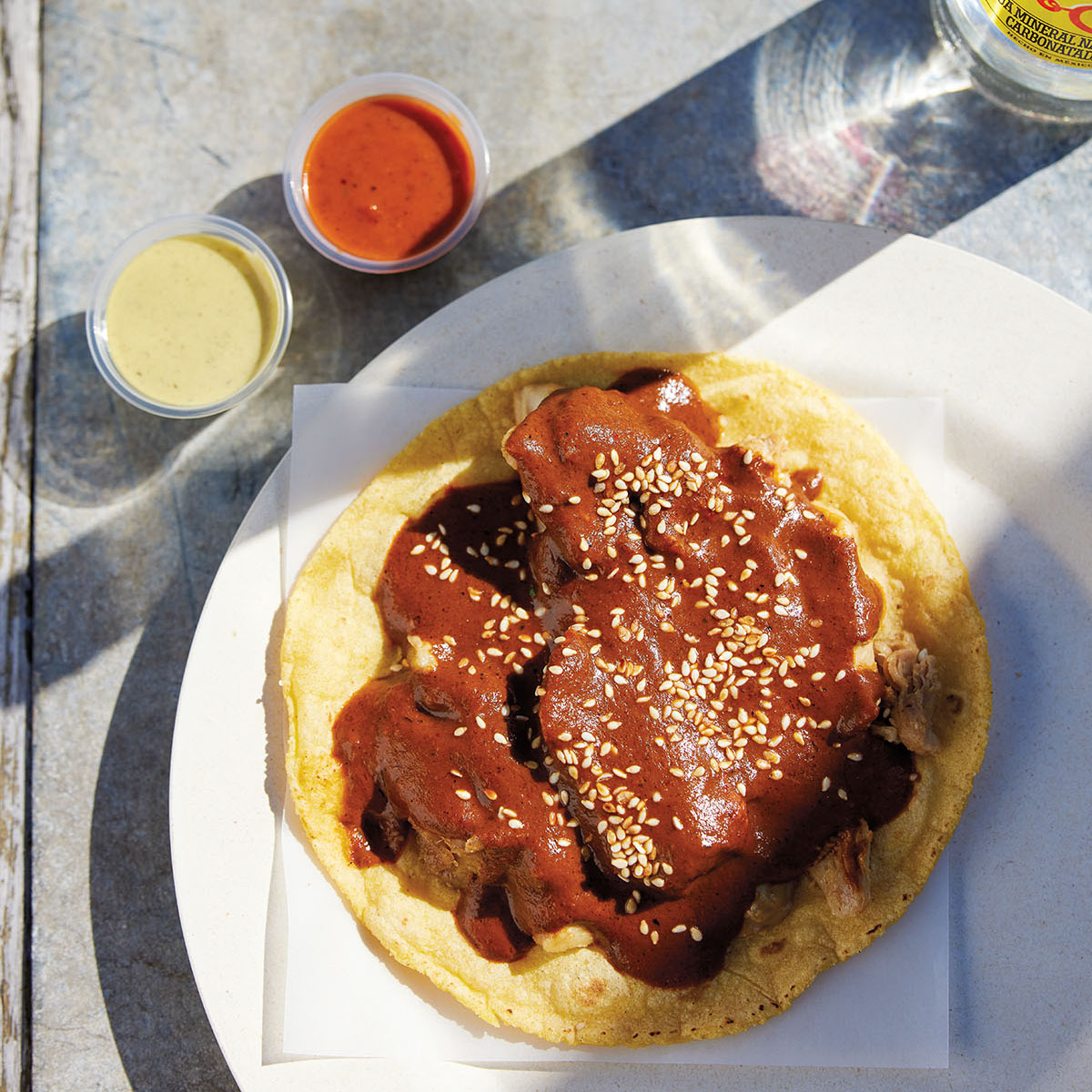

Malty, nutty, chocolatey, spicy, or even akin to the scent of a campfire—mesquite is a notoriously tricky flavor to describe. But it’s one worth getting to know, especially if you are one of the many Texans who consider it a “trash” tree.
Native to Texas, Prosopis glandulosa (aka honey mesquite) is drought-tolerant, disease resistant, and beneficial to soil. The shrub’s bright yellow flowers bloom in the spring and make tasty honey, while its earthy, slightly sweet wood is preferred for kindling by barbecue pitmasters in South Texas. It has historical precedence too, as Indigenous Texans survived in the southern part of the state for centuries in large part thanks to the protein-packed beans that hang off the branches in 6-10-inch pods.

Baker Becka Rodgers utilizes mesquite flour in many of her desserts at Geranium Club in San Antonio.
And yet, there are few farmers in the state growing the legumes as crops. Harvesting occurs in peak Texas summer and can be laborious, with much of it completed by hand. Sandy Ortiz McCarty and James McCarty of McCartyLand Farms purchased their 10-acre orchard outside Seguin in 2015, where they grow mesquite as part of an organic, regenerative, and largely native agricultural program. Sandy hand-sorts most every mesquite bean they harvest, in part because she is aiming for the choicest product. “The beans have to be really good in order for us to put our name on it,” she says. After being roasted, and sometimes milled into flour, they’re sent to a roster of chefs, bakers, brewers, and passionate home cooks.
For these customers, cooking with mesquite is part of embracing Texas-specific ingredients. As a child in the Rio Grande Valley, Con Todo chef Joseph Gomez would climb the large mesquite tree in his grandmother’s front yard in order to nibble on the sweet beans and tree sap that hardened like candy. “I think it’s important to talk about,” he says, “the resilience of both mesquite trees and the [Indigenous] people whose land they grew on.” Today, at his Austin food truck, he pays homage to the area around his hometown, turning mesquite flour into tortillas and gorditas, as well as a flavoring for desserts like buñuelos.
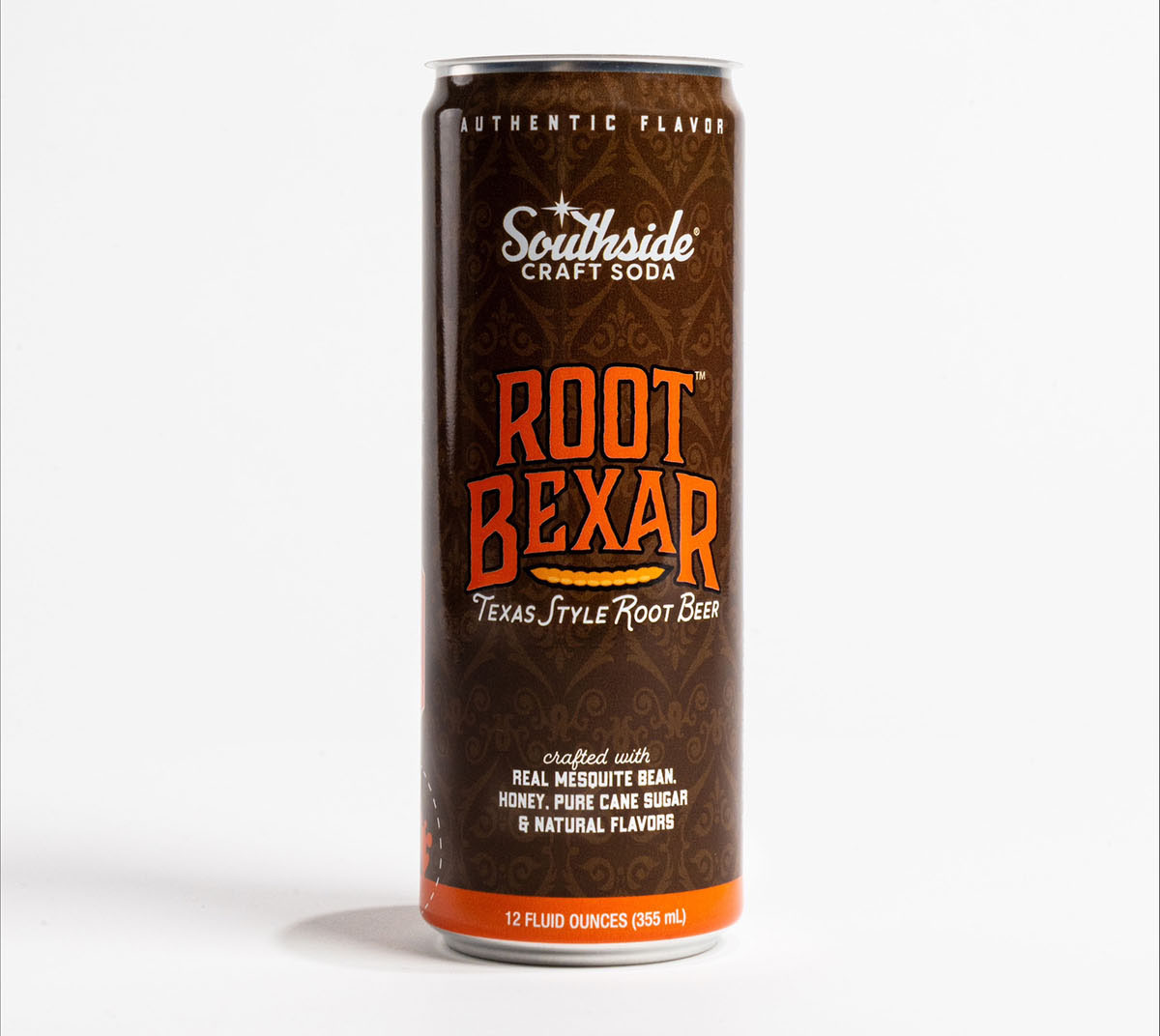
Spill the Beans
Looking to try the distinctly Texan flavor of mesquite? Here are some unique examples
Drinks
Jester King in Dripping Springs makes a farmhouse ale called Cerveza de Mesquite that’s lightly steeped with the beans. Not into alcohol? San Antonio’s Southside Craft Soda produces a fun riff on root beer with mesquite and local honey called “Root Bexar” (pronounced “bear,” like Bexar County). jesterkingbrewery.com; southsidecraftsoda.com
Pastries
Whether it’s the base of pecan polverones or the crunchy topping on a dark chocolate-studded concha, Comadre Panadería in Austin relies heavily on the flour. And for a vegan option, check out Frontera Pastelera in San Antonio, where the warm caramel flavors of mesquite are put to good use in a whole grain chocolate chip cookie topped with flaky sea salt. comadrepanaderia.com; fronterapastelera.netlify.app
Treats
Growing ice cream chain Lick offers a seasonal flavor that tackles the ingredient two ways: crumbled mesquite cookies folded into a roasted mesquite sweet cream base. Austin-based Mexican-style confectioner Hijita also makes it the centerpiece of a vanilla-mesquite drinking chocolate. ilikelick.com; hijita.com
Becka Rodgers started her San Antonio-based micro-bakery Geranium Club with a focus on local and seasonal ingredients in 2020. Mesquite flour, which she often uses as a spice, just made sense to incorporate into treats like Meyer lemon thumbprint cookies, an olive oil cake with salty chocolate cacoa nib Swiss buttercream, and a rich, dense loaf cake for the holidays. “The places that you can take it are endless,” she says. “And in Texas, it’s unavoidable. It’s everywhere you look.”
To Rodgers’ point, the growing appeal of this ubiquitous and versatile plant means it’s sure to be an even greater part of the taste of Texas.








